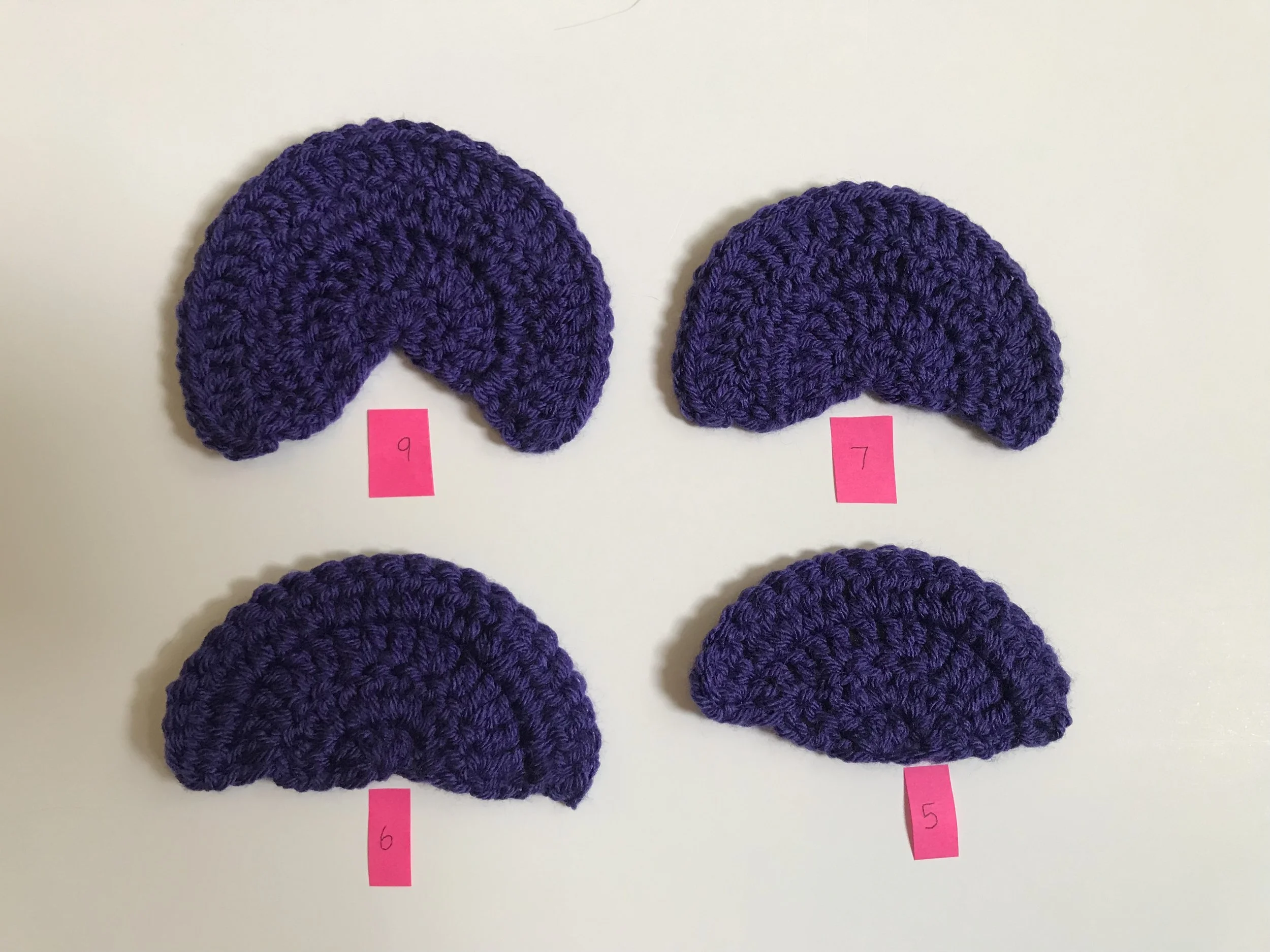Where did crochet even come from??
/Where the heck did crochet come from anyway? Who decided it was a good idea to loop some string around a hook a bunch of times? Here we explore the history of crochet!
Read MoreWhere the heck did crochet come from anyway? Who decided it was a good idea to loop some string around a hook a bunch of times? Here we explore the history of crochet!
Read MoreI recently experimented with crochet semi-circles for a (crazy niche) pattern I wrote. There are so many variables that influenced the final product, and I had to find the perfect combination of hook size, yarn weight and stitch count to keep my semi-circle from looking like Pacman or a rapidly disappearing pie.
The basic theory behind crocheting a semi-circle is just math—divide the stitch count of a full circle in half. So instead of (for example) crocheting 10 stitches in a magic ring and joining to make a circle, you’d start with 5 stitches in the magic ring and NOT JOIN. You would continue to work the semi-circle in ROWS, not rounds, keeping the same increases as you would for a full circle.
So how do all the variables affect the outcome? Let’s experiment.
For the following semi-circles, I used a 5 mm hook and worsted weight yarn—specifically, Red Heart with Love. I made four different “specimens” with a different number of starting stitches in the magic ring—9, 7, 6, and 5.

Obviously, the semi-circle with a starting stitch count of 6 is the clear winner! Interestingly, the specimen with the stitch count of 9 appears to be exactly 75% of a circle—which corroborates the finding that 6 is the right stitch count for half a circle. Making 12 the perfect stitch count for a full circle!
But how does hook size affect our findings? Good scientists know not to change too many variables at once, so I kept the yarn and stitch count constant—Red Heart with Love, 6 stitches.

For this part of the experiment, I used 5 mm, 4 mm, and 3.75 mm hooks. 3.75 is really the smallest hook I would want to use on a worsted weight yarn. As you can see, the perfectness of the semi-circle was pretty much carried through, even when using a smaller hook. The 4 mm actually looked the best! But is there a limit? Let’s try a 6.5 mm hook.

The 6.5 mm hook did the job too! A stitch count of 6 really is the magic number. As the hook size increases, the width of the stitches increase—which would suggest the semi-circle would become Pacman—but the height of the stitches increases as well. So the semi-circle stays a semi-circle. It’s just a bigger or a smaller one depending on the hook size you use.
So we’ve learned a lot from this experiment. To make a semi-circle, start with a stitch count of 6 and adjust as necessary based on yarn weight, hook size, and your personal stitch tension. We haven’t used yarn weight as a variable in this experiment, but maybe for another day!

Behind the scenes. Meow.
The pattern I was writing that needed a semi-circle was a bit different and actually ended up needing a starting stitch of 7! How odd, right? It’s because the increases were a little more complicated than the normal way of increasing a circle. But it spurred this great experiment, and I feel smarter for it. Do you?
We rent beautiful, handmade photo props for newborn photography all over the United States. Get smart, skip Etsy, save money.
Hi, I'm Suzanne. I love understanding WHY crochet works and I hope you enjoy my attempts to explore the mechanics of our favorite yarn pastime. Please peruse the patterns I have designed and thank you for stopping by.

This is the only time I've ever drank from a teacup. Don't be fooled. I am not fancy.